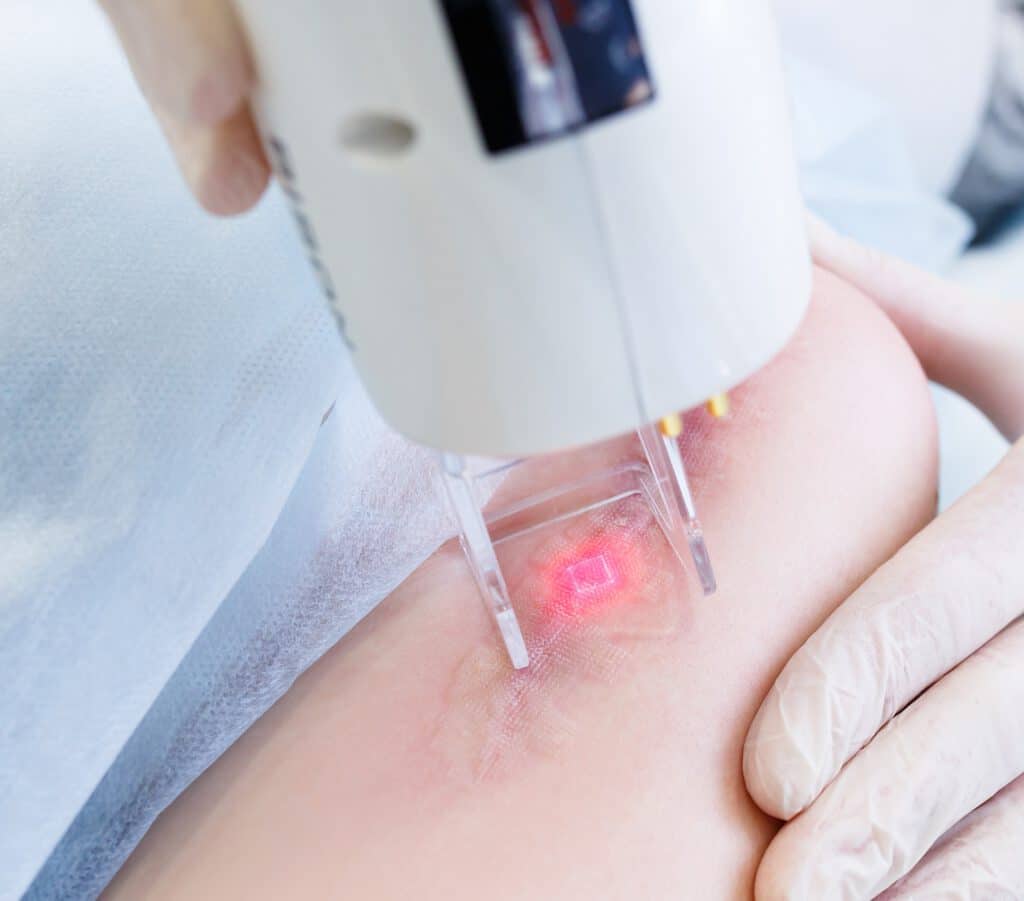Laser aesthetic treatments and the role of DOEs
The field of laser medical aesthetic applications has witnessed remarkable advancements in recent years, offering transformative solutions for skin resurfacing, tattoo removal, and blemish treatment. Diffractive Optical Elements (DOEs) have emerged as crucial components in shaping and manipulating laser light, driving these advancements. This article delves into doe medical applications, with a particular focus on doe medical applications in aesthetic laser treatments. Additionally, we will explore the distinct advantages that doe optics bring to the field, including their customization capabilities, improved performance, and their role in fractional laser aesthetic treatments.

DOEs - What Are They? How Do They Work? How Are They Produced?
Diffractive Optical Elements (DOEs) are transmissive phase structures that shape laser beams by creating a phase delay on the incident light, resulting in a tailored far-field intensity pattern. This far-field is often the focus of the lens installed at the end of a laser aesthetic machine handpiece or the focus of some other optical system.
DOEs are typically fabricated using lithography and etching techniques on glass or zinc selenide substrates. These manufacturing processes ensure the precise and accurate replication of desired phase profiles, enabling the desired beam shaping characteristics without any tolerance on angles of the shaped beam or beams array coming out of the DOE. This is possible since errors in lithographic production do not affect the period of the DOE , which determines the diffraction angles.
Another type of hybrid refractive –diffractive beam shapers that are similar to DOEs are Broadband diffusers. These are randomized lens arrays with some diffractive added functionality, that are typically produced using grey scale lithography and etching.
Advantages of DOEs and Broadband Diffusers in Aesthetic area Laser Treatments
Aesthetic laser area treatments, such as tattoo removal and blemish treatment, require achieving a flat top energy distribution on the skin. Several methods are employed to achieve this, including the use of Diffractive Optical Elements (DOEs), diffractive diffusers, micro lens arrays, and broadband diffusers.
DOEs offer precise beam shaping capabilities, creating well-defined spot arrays with sharp edges. They provide excellent control over the energy distribution, allowing for targeted and accurate treatment. However, DOEs are typically designed for monochromatic light sources, which can limit their use in broadband applications.
On the other hand, broadband diffusers, such as randomized hybrid refractive-diffractive optics, offer polychromatic performance, making them suitable for a wider range of light sources. They provide high efficiency in distributing energy evenly across the treatment area, ensuring consistent results. However, the energy distribution may have less defined edges compared to DOEs.
Choosing between DOEs and broadband diffusers depends on the specific requirements of the aesthetic laser treatment. DOEs excel in providing precise control and sharp-edged spot arrays, while broadband diffusers offer high efficiency and polychromatic capabilities. Practitioners can select the most suitable approach based on factors like the desired energy distribution, light source characteristics, and treatment objectives.
Advantages of DOEs in fractional Laser Treatments for skin rejuvenation.
One of the leading medical-aesthetic applications for lasers is surface fractional treatment using ultra-fast lasers. In this treatment, micro lesions are created beneath the skin using a focused laser beam, stimulating renewal of the skin. An array of such micro-lesions must be generated to cover the treated area, with accurate separations and good uniformity.
For this application, multi spot diffractive beam splitters are typically used to generate the array of spots on the skin. These DOEs can generate any desired 2D or 1D pattern of spots with excellent precision and uniformity and are insensitive to variations in input beam size.
Summary: Benefits of DOEs Medical Technology Solutions
The incorporation of Diffractive Optical Elements (DOEs) in medical technology offers several advantages. The ability to tailor the far-field intensity pattern through precise control of the phase distribution allows for customized treatment patterns in aesthetic laser procedures. This customization empowers practitioners to optimize treatment outcomes based on individual patient needs and specific skin conditions.
DOEs also contribute to improved performance and efficiency in medical devices. By utilizing lithography and etching techniques, DOEs can be fabricated with high precision, ensuring accurate beam shaping and control. This enhanced performance translates into better treatment accuracy, reduced energy loss, and improved efficiency of laser systems
TL;DR:
What are Diffractive Optical Elements (DOEs)?
DOEs are transmissive phase structures that shape laser beams by creating a phase delay, resulting in tailored intensity patterns.
How are DOEs produced?
DOEs are typically fabricated using lithography and etching techniques on glass or zinc selenide substrates, with high-power DOEs featuring multiple phase levels for greater efficiency.
How do DOEs contribute to aesthetic laser treatments?
DOEs enable precise beam shaping and generation of spot arrays, promoting collagen production, skin rejuvenation, and scar reduction in fractional laser procedures. They also allow for customized treatments in tattoo removal and blemish treatment.
What are the benefits of DOE medical technology?
DOEs offer customization capabilities, improved treatment performance, better accuracy and for area treatment better efficiency.

